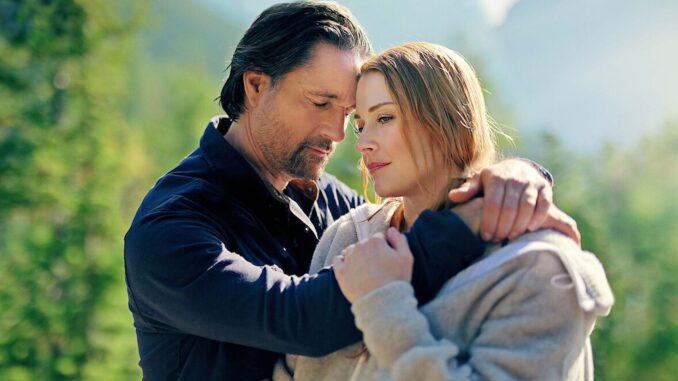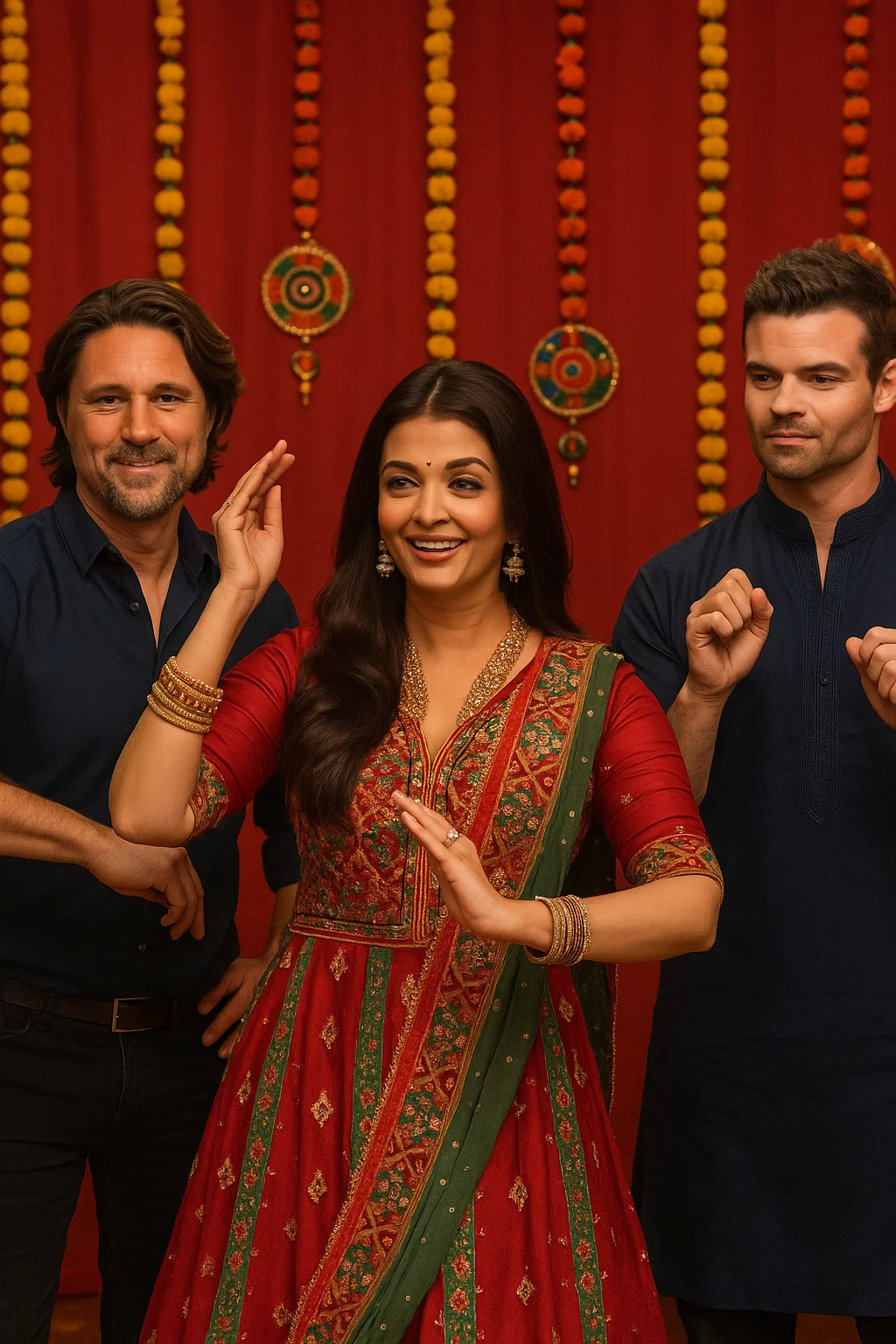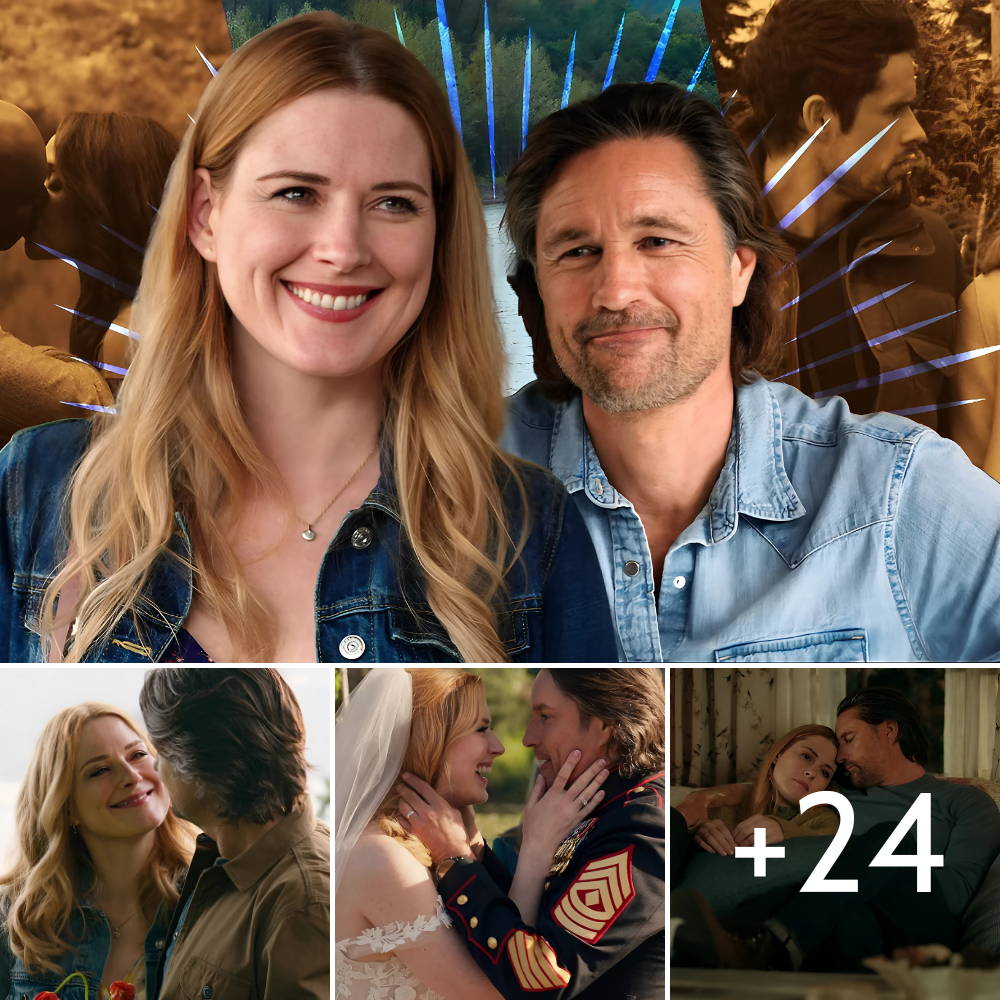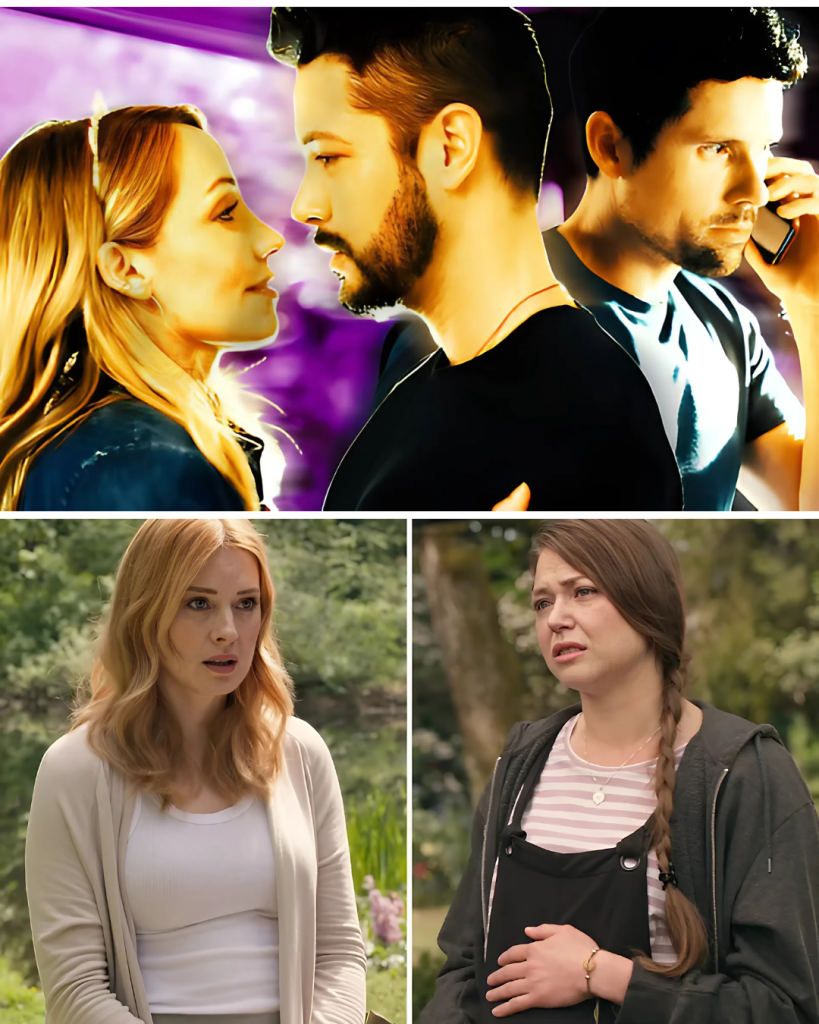Before Virgin River, The Vampire Diaries, or Grey’s Anatomy turned them into household names, Martin Henderson and Daniel Gillies were part of a cinematic experiment that beautifully blended
East and West. Long before small-town romance and supernatural drama defined their careers, the two actors found themselves in the vibrant, musical universe of Bollywood—
sharing the screen (and the dance floor) with none other than Aishwarya Rai Bachchan. It was 2004 when director Gurinder Chadha—known for her cross-cultural hits like Bend It Like Beckham—
reimagined Jane Austen’s Pride and Prejudice for a global audience. The result was Bride and Prejudice, a dazzling celebration of color, music, and cultural unity. The film didn’t just introduce Western audiences to Bollywood rhythms; it also gave two rising stars their first taste of international spotlight, thanks to an unforgettable Garba dance sequence that still delights fans two decades later.

From Fresh Faces to Familiar Favorites
When Bride and Prejudice premiered, both Martin Henderson and Daniel Gillies were relative newcomers in the entertainment world. Henderson, a New Zealand actor, had been slowly carving his niche through indie projects and short-lived television roles. Daniel Gillies, the Canadian-born actor, was just beginning to make waves with his striking screen presence.
What neither could have predicted was how this vibrant musical would become a pivotal—and unexpected—stepping stone toward their later fame. Henderson would go on to capture hearts as Dr. Nathan Riggs on Grey’s Anatomy before becoming the steadfast Jack Sheridan in Netflix’s Virgin River. Gillies, meanwhile, would immortalize himself as the noble yet tormented Elijah Mikaelson in The Vampire Diaries and its spin-off The Originals.
But before they became international sensations, the duo were wide-eyed performers learning to master traditional Indian dance choreography beside one of Bollywood’s most graceful icons.
Aishwarya Rai: The Graceful Guru
By the time filming began, Aishwarya Rai was already a global name. The 1994 Miss World had transitioned into one of India’s most accomplished actresses, celebrated for her ethereal beauty and refined artistry. To Henderson and Gillies—outsiders stepping into the grandeur of Indian cinema—she was both a co-star and an unspoken teacher.’

According to behind-the-scenes accounts, Rai patiently guided the two through Garba, a lively traditional dance from India’s Gujarat region. The number required intricate footwork, rhythmic claps, and expressive spins—all delivered with the exuberant precision Bollywood audiences expected. Henderson and Gillies, accustomed to Western-style performances, had to unlearn their restraint and embrace the unabashed energy of Indian celebration.
Rai’s natural poise and warmth reportedly made the process far more enjoyable. As she moved with effortless rhythm, her co-stars tried to match her tempo, learning not just steps, but the spirit of storytelling through dance.
The “Dola Dola” Showdown
At the heart of Bride and Prejudice lies one of its most visually stunning moments—the “Dola Dola” sequence. Set during a festive Garba celebration, it becomes more than a musical interlude; it’s a symbolic clash of hearts and cultures.
Henderson’s William Darcy and Gillies’ George Wickham both attempt to charm Aishwarya Rai’s Lalita Bakshi. The tension between the men, rooted in class and pride, finds playful expression through the choreography. As the percussion of dhol drums fills the air, Darcy’s stiff reserve contrasts sharply with Wickham’s flirtatious energy. The two circle Lalita like dueling suitors, each trying to win her attention through dance.
The result? A cinematic blend of rivalry and romance, where emotions are expressed not through dialogue but through rhythm and movement. Aishwarya, poised and radiant, commands the scene—gracefully balancing between the two men, turning what could have been a simple dance into a masterclass in screen chemistry.
A Cross-Cultural Experiment Ahead of Its Time
Bride and Prejudice was not just entertainment—it was a statement. Gurinder Chadha’s vision sought to unite Bollywood’s musical exuberance with Hollywood’s storytelling traditions, creating something entirely new. While the film didn’t dominate box offices worldwide, it left an enduring cultural footprint.
For Aishwarya Rai, it paved the way for her later international projects like The Mistress of Spices and The Pink Panther 2. For Henderson and Gillies, it became a charming entry on their résumés—one that fans would rediscover with delight years later, once both actors achieved major television success.
The film’s cross-cultural ambition resonated deeply with global audiences who longed for stories that celebrated diversity without erasing individuality. In that sense, Bride and Prejudice was a trailblazer—a film that dared to bridge two cinematic worlds long before “global cinema” became a mainstream idea.
The Legacy of “Dola Dola”
Two decades later, the “Dola Dola” number continues to be shared on social media, often with captions marveling at the unexpected sight of Virgin River’s Jack Sheridan and The Originals’ Elijah Mikaelson performing Garba with Aishwarya Rai. Fans who stumble upon the clip are equal parts amused and enchanted.
There’s something undeniably magical about seeing these now-established stars in their early days—unguarded, enthusiastic, and slightly awkward as they dive into a completely different cultural art form. The moment encapsulates the joy of artistic exploration, the kind that transcends language and geography.
It’s also a testament to Aishwarya Rai’s generosity as a performer. She didn’t simply lead the scene—she invited her co-stars into the rhythm, ensuring that their performances felt authentic and inclusive rather than ornamental.
A Nostalgic Glimpse into the Past
Today, as Martin Henderson continues to bring emotional depth to Virgin River and Daniel Gillies captivates audiences in thrillers and dramas, fans often look back at Bride and Prejudice as a time capsule of sorts—a reminder of their beginnings and the unpredictability of artistic journeys.
In an industry often defined by typecasting and image, the film stands as proof of how creativity can surprise even the most seasoned fans. Who would imagine that two Western actors who later dominated television dramas once performed traditional Indian dance steps under the watchful eyes of Bollywood royalty?
When Worlds Collided—Beautifully
Bride and Prejudice remains a rare cinematic gem—a joyous experiment where cultures collided, and in that collision, created beauty. Its legacy goes beyond its plot; it represents a time when storytelling dared to dance to more than one beat.
For Henderson and Gillies, it was a moment of growth and discovery. For Aishwarya Rai, it was another opportunity to extend Bollywood’s artistry across continents. And for fans, it remains a delightful “what if” moment—what if Hollywood and Bollywood collaborated more often with such heart and humor?
As the music of “Dola Dola” continues to echo across generations, one thing is certain: before the quiet charm of Virgin River or the dark elegance of The Originals, there was Garba—and three stars who proved that dance, like storytelling, is truly universal.


